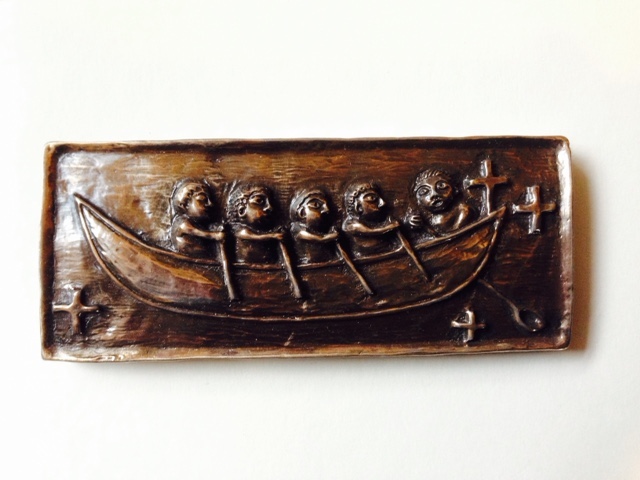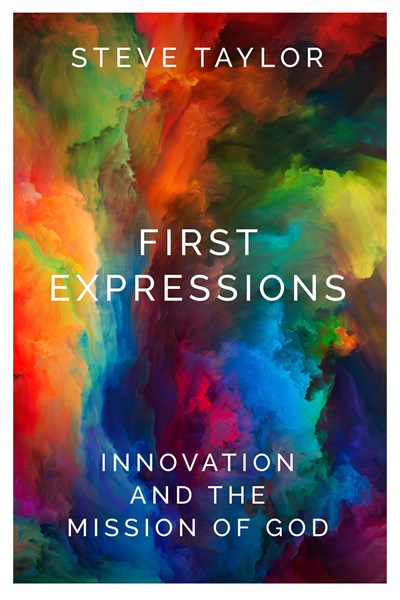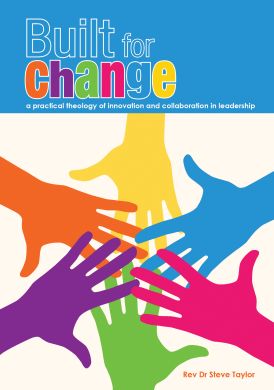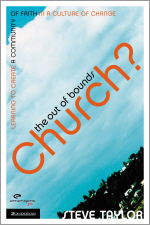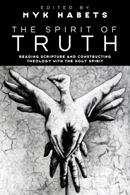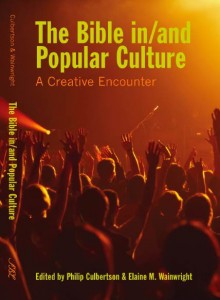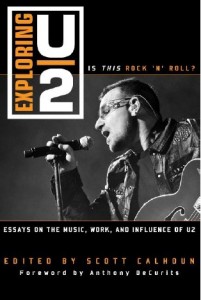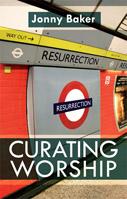Tuesday, March 20, 2007
speaking and writing
I need some help in processing an issue.
I do a regular [fortnightly] slot on a [Christian] radio station. Titled “Viewpoint” the brief is as follows:
Viewpoint is a 2 minute monologue designed to equip the Christian audience to better understand current news and social issues from a Christian perspective. Each item needs to highlight an issue that affects the average Kiwi, and provide them with an understanding of how the Christian Worldview provides a Biblical perspective. Whilst the Bible does not need to be quoted, it is important that the Scriptures themes be clearly communicated. Viewpoint is not designed to promote the contributors viewpoint, but the Bibles. It should be challenging, informing and insightful.
To date I have done a reflection on the movie Babel and the Treaty of Waitangi; on the movie Blood Diamond and where is God in Africa; on how a rich country like New Zealand can respond to the Parable of the Great Banquet in Luke 14. It has been fun, but it has also been an added stress. And I work on making them “edgy,” so I feel quite vulnerable when I do them.
The radio station have now asked if I would be willing to have the MP3 placed on their website. No worries.
They have also asked if I have a written transcipt and if so, would I be willing to provide that for the site. I do. But here’s the rub.
Something deep within me says that oral communication is different from written communication. I know that what I write to speak is different from what I write to be read; different pace, different rhythm, different style. And when I quote someone in a verbal presentation, I won’t cite publisher, but I will in a written document.
What is more, I wonder if people read differently than they hear. I face this with my sermons. They are spoken (obviously), but I use a full script. When I arrived at Opawa, some in the congregation were older, and more hard of hearing, than at Graceway. So I offered them my full script. We also offer it to speakers of English as a second language. Now you can hear the pages turn at Opawa on a Sunday morning.
Yet when I speak the script, I make on the spot adjustments and it comes in the context of a 75 minute service. Sometimes people have not been present, but they have gotten the script and they have concerns about my theology. (Other people are simply there and still have concerns about my theology :)). And often the concerns boil down to the simple fact that the written word is different from the spoken word and when I explain the whole service, there concerns seem lessened. (For example, I did a sermon last year really pushing the Incarnation hard. We then opened it up for talkback and in that interaction, the community brought a nice pastoral balance). So the whole was different from one part.
And I don’t have a script writer who carefully inserts footnotes to validate my points. And I am not sure that I want to spend the time to turn my spoken words into written words. And my first book editor told me (in love) that I needed to learn not to write like I speak.
Am I barking mad? Am I being lazy? Is speaking different from writing? Should I seek to preserve the difference? Would a internet surfer who stumbles across the written transcipt of my radio Viewpoint be able to appreciate the difference? Does it matter? Won’t people in fact be more likely to read my words than to download the MP3 and thus in terms of reaching a wider audience, I should encourage verbal transcript? If I provide a written script, will I have had to spend more time dealing with brickbats and bouquets? Yet shouldn’t I be honoured that people would care enough to send me the brickbats and bouquets?
Ahhhhh. So many questions. Any wisdom out there?
Further link:
Speaking and writing: a theological murmer about the implications of this post for Bible
Sunday, March 04, 2007
How did Jesus use the Bible?
We limit not the truth of God, to our poor reach of mind,
by notions of our day and sect, crude, partial, and confined.
The Lord hath yet more light and truth; to break forth from his word.
(Hymn from the 1850’s by George Rawson.)
The Bible is important to Christians, who claim that Scripture is God-breathed (2 Tim 3:16). And I think of Genesis 2:7 Lord God breathed into adam the breath of life. And of John 20:22, where Jesus breathed on the disciples, the new adams, and they received the Holy Spirit. The Bible as God’s life-giving Words.
The claim that Scripture is God-breathed in 2 Timothy 3:16 is then followed by a statement of what Scripture is useful for “teaching, rebuking, correcting and training in righteousness.”
Which got me thinking about how Jesus used the Bible. Luke 10:25-37 (the Parable of the Good Samaritan) is one of the most well-known Bible passages of all time. So how does Jesus uses the Bible in this passage?
Sunday, February 11, 2007
the gospel according to the treaty of waitangi
This week, on Tuesday, New Zealand celebrated Waitangi Day as a public holiday. Some of you would have slept in and gone to the beach. Others of you would have had a barbeque and caught up with friends. Or watched the cricket as New Zealand lost to England.
Waitangi Day honours the signing of the Treaty of Waitangi, in 1840, at Waitangi, in the Bay of Islands. It is a very moving, almost spiritual, place, an invitation to consider what it might mean for humans to show hospitality to strangers, to practise justice, and for diverse cultures to be one people.
The Treaty of Waitangi, when leaders of two peoples, Maori and Pakeha, negotiating a way to live as one people. Which sounds just like the gospel of Jesus, according to Ephesians.
Friday, October 13, 2006
what we read shapes what we hear

These are beautiful books. They are the Bible. Every word is hand-written. Many pages are illuminated with vibrant hand-drawn pictures. When you open this Bible, you are faced with the text not as black and white, but as vibrant in colour and carefully tender in enscription. It comes in 7 volumes; including the Pentateuch, the Psalms
and the Gospel and Acts
. For more on the why and how of the project, go here.
On Wednesday I was teaching and I started the class, as we have done every week, by reading from Luke 10:1-12. We have read this same Scripture for the last 7 weeks, dwelling deeply in the Word as a class. (Critics of emerging church might want to note this fact – a class on postmodernity and Christianity, led by an emerging church advocate (me!) that each week reads the same Scripture.)
On Wednesday I showed the class the Saint Johns Bible. I pointed out the care and colour that would have gone into handwriting the entire Bible. And I then read from this “coloured” Bible. One class member spoke; “I don’t want to think in words today. I want to think in images. When I hear this text I think of this image ….”
Fascinating! We have shifted from Christ as the Word of God in John 1 to Christ as the Image of God in Colossians 1. Both Biblical ways of thinking. I use a visual text for the first time in this class and the discussion of the Biblical text becomes visual. A coincidence? Or might it be that what we read from shapes what we hear? Could it be that a different shaped Bible means we hear different things?
Biblical text started life as oral, the stories of Jesus told and re-told by disciples. People heard orally. They were then written down on scrolls. People read a continous document.
Only with the birth of the printing press did the Bible become a book and did people turn pages and read uniform text. The Bibles we read from today are so different from the “original” Bibles. They are products of our technology. And we are shaped by these enculturations.
If we believe people are made in the image of a Creator God, if we believe that all our senses are a gift, then how will we engage ALL the senses around the Bible? Not just sense to appreciate written text, but senses to appreciate oral readings and visual readings.
And in 15 years time most people will engage our Biblical text as digitised and hyperlinked. Now how will that shape what we hear?
Friday, September 22, 2006
125 years later
Cambridge Baptist is 125 years old on Sunday. During my 1st year of training to be a pastor, this church were brave enough to let a young novice (me!) be part of their life.
15 years later, they’ve asked me back(!) to preach at their Sunday morning celebration service. I’m DJing together some art by Pete Majendie; 3 stories; Elijah in 1 Kings 19 ; with 4 graphs of NZ religious trends (like this one, download file which shows that Christianity is losing ground in every single age group under the age of 40)
And after the handshakes I get to drink some Belgian beers (that’s a request) with some good friends. Looking forward to it all.
Tuesday, September 12, 2006
bible families
I am in the process of a 5 week series on Bible families. I started on Fathers Day with the theme of “good to be a guy.” We invited all the males in the church to bring something from their shed and looked at David and Jonathon in terms of male friendship.
We are now looking at the constellation of family relationships around Abraham; from the perspective of Abraham as father, Isaac and Ishmael as sons, Sarah as a wife. It seems to me that Bible families are not perfect families. Yet in these hard places, God is active.
This week it is Ishmael; looking at the pain and consequences of broken families. Heightened of course with the 5th anniversary of 9/11. I love how Sarai and Abram try to sort out God’s plan. They chatter.
Yet God is silent as these earnest people try to work out God’s perfect plan. So much Christian energy is wrapped up in finding God’s perfect plan.
The only time God speaks is to bless Ishmael and Hagar, expelled and left for dead: God blessing plan B, God blessing the victims of family breakdown, God blessing the birth of the Arabic nations.
The two most helpful resources have been Phil Culbertson’s The New Adam, The Future of Male Spirituality and John Drane and Olive Fleming Drane, Family Fortunes.
Tuesday, September 05, 2006
the Bible as living word in community: idea 3
The Sunday before, ask males in the church to bring something from their shed (a tool, a hobby, a tool). This can become a hugely energising exercise for some – we ended up with cars and boats inside the church.
So all of a sudden you are surrounded by the Monday to Saturday world of half of your church community. You are faced with the Bible needing to be lived in this real world.
 Now, try and serve communion … white table cloth in contrast to tools and engines, bread in squares or wafers in contrast to greasy hands, an altar in contrast to a shed … and you are face to face with the gulf between church and everyday life.
Now, try and serve communion … white table cloth in contrast to tools and engines, bread in squares or wafers in contrast to greasy hands, an altar in contrast to a shed … and you are face to face with the gulf between church and everyday life.
How did it get this way? How did an everyday meal shared by Jesus become a ritual separated from life? What is the theological values that drove the introduction of altars and whiteness and wafers? Here is how I tried to make the links. It was hard, hard theological work!
Tuesday, August 29, 2006
the disciplines of Biblical texting
Are some Biblical texts more equal than others? I have been preaching through the Sermon on the Mount the last 3 weeks. It’s been hard. To preach the Sermon on the Mount has asked me to think deeply about big issues – both textual (relationship of Law to grace, interpretive approaches) and contemporary (restorative justice, peacemaking, economics, gender relationships). I have been tempted to move onto easier Bible texts. And I am stuffed; mentally and spiritually drained.
It has left me wondering if some Bible texts demand more from the preacher and more from the community. And if so, are we willing to embrace the disciplines of dwelling with the hard texts?
Earlier this year I had a bit of health scare. As a result, I took up jogging, hoping to improve my general fitness.
Jogging has had an unexpected byproduct. Here in New Zealand, we have been moving into spring. Warmer weather means lighter clothing. To my surprise, my last summers’ wardrobe is hanging a bit round my wasteline. I’ve lost weight (not that there is much to lose)! So there has been something about the discipline of running that has produced both a fitter, and leaner Steve!
I was jogging this morning, wondering if there is some link between Biblical texts and discipline. Could the discipline of staying with some harder texts produce a leaner, fitter pastor and a leaner, fitter church? Are we willing to pay that price?
Friday, August 25, 2006
the Bible as living word in community: idea 2
This post is part of a series of posts on how to use the Bible in community. Idea 1 – communal lectio divina is here. Faced with caricatures of “preaching as monologue” OR “discussion as sharing of ignorance”, we need new skills and capacities to preach the Bible as a living word in community.)
Here is idea 2. (It is adapted from a practice used at New Zealand Baptist Assembly, 2005). We did this at our church meeting last night, with 50 people in attendance.
Step 1: I affirmed “for where two or three are gathered” and invited us to let guide God us through the Bible, in community, and led by the Spirit. I explained I was going to read a Bible passage and ask everyone to write down 1 way to apply this at Opawa Baptist in 2007.
Step 2: I introduced a Bible passage. This took about 10 minutes. I referenced the original context. I challenged us to hear it, not with church ears, but with mission ears.
Step 3: I prayed; Spirit of God, give us mission ears, honour your Word, speak to us, 2 or 3 gathered, about your future for Opawa.
Step 4: I read the passage – Ephesians 4:2-13 – aloud.
Step 5: I invited everyone to write down (on a piece of paper handed out at the door) 1 way for the church to apply this in 2007.
Step 6: On the back of the piece of paper handed out was a letter (a or b or c or d or e or f). I invited people to move into a group (8 people in total) with those of the same letter.
Step 7: People broke into pairs. Each person shared their idea. Each pair was asked to choose one idea to take forward.
Step 8: Each pair joined another pair. Each pair shared their one idea with the other pair. The four were asked to choose one idea to take forward.
Step 9: Each four joined another four. Each four shared their one idea with the other four. The eight were asked to choose one idea to take forward.
Step 10: These ideas (6 in total from the 6 groups) were read aloud to the meeting and given to the church leadership.
Step 11: The book of Ephesians and the specific text (Ephesians 4:2-13) will be our “dwelling text” for much of our preaching in 2007. The church leadership will consider and action, with the congregation, these ideas.
Why do this?
– I love leading a church in applying the Bible, as 2 and 3’s, to communal church life.
– I have engaged our church community in a bottom up vision.
– steps 7-9 weed out “crazy ideas” and also increase the likelihood of ownership.
– I have some excellent concrete ideas to work with into 2007.
– I have learnt some more about the skills and capacities of my church community in applying Scripture and listening to each other. I know more clearly some strengths and weaknesses and anxieties.
It was a first time trial. I learnt for next time;
– not everyone can apply a Bible text to church life. I could have said that verbally at the start and it would have decreased anxiety for some.
– I should have provided a copy of the Bible text, because not everyone brings a Bible to church meetings.
– doing this cuts across established understandings of “church business meetings” and that produces a new set of tensions (particularly in me, the one leading this change, and having to trust that if the Bible and the community don’t “work” then I have egg on my face.)
– the process is hard, and tiring, work for all concerned.
– I need to emphasis more strongly that the more concrete the idea, the better. General ideas become harder to implement.
Oh, and what where the 2007 Opawa ideas emerging from Ephesians 4:2-13?;
Tuesday, August 15, 2006
the Bible as living word in community
Last week I blogged about the Bible, in particular how we use the Bible in community (post is here). I suggested we needed a new skills and capacities to move us beyond the caricatures of “preaching as monologue” OR “discussion as sharing of ignorance.”
On Sunday I had another go at communal lectio divino. I note it here for those interested in ways to use the Bible in community. There are many. Here is but one.
1. I invited people to imagine themselves inside a Bible text.
2. I asked the men present to be the disciples in the story. I asked the women present to be the woman in the story.
3. I read the Bible text through twice. (In this case it was John 4).
4. As I went, I made brief comments on exegetical features of this text. (In this case, Samaria, Samaritans, being at a well at noon).
5. The first time I read the text, I invited the men-as-disciples to express how they were thinking and feeling. I paused 4 times; at the end of verse 12, 17, 19, 26, for them to vocalise.
6. The second time I read the text, I invited the women to express how they were thinking and feeling. I paused 5 times; at the end of verse 10, 14, 18, 23, 26, for them to vocalise.
7. We shared in two’s how this text challenged us.
For over 40 minutes, we engaged the text. There was real emotion. There was intellectual stimulation. There was insights I had never realised.
God was present. So present that we finished by doing something we’ve never done at Digestion in my time. We stood and I invited people to talk to God about this Bible passage. Lots of people prayed, passionately, sincerely.
God had spoken. The Bible was living word in community. I note this as one way (and there are many, many more) that we can experience the Bible as living in community.
One more thing. This approach still requires a good deal of preparation. There is the exegetical work, the reading and re-reading of the text in order to discern what voices can be heard and at what points the Biblical narrative allows movement. There are new skills in terms of offering a corporate safe space and choosing how to respond to people’s comments. There is anxiety in not knowing what the ending will be and so needing to trust the Spirit.
Thursday, August 03, 2006
preaching belongs to the community
– it’s either “long-winded, old-school Bible preach[ing]” or “artsy collective ignorance.”
Pernell points to a nice little dualism which I hear every now and again when we talk about the Bible and church.
In modernity expounding the Bible usually belonged to one person. But a close look at the Bible makes that problematic: the school of the prophets in the Old Testament suggests a community engaged with the text, Jesus and the Emmaus Road suggests God is revealed not in the expounded words but seated around table, Paul in the lecture halls of Greek culture “dialogued” between text and context. I am not suggesting either/or; replacing one way with another way, but both/and.
One of my students summed it up beautifully: Preaching belongs to the community. But that statement requires the learning of a whole new skill set.
First is the skill of trust: It is much safer for 1 voice to speak. To allow community engagement requires whole new levels of trust in Spirit and trust in people.
Second is the skill of engagement: Ask a dumb question and you are likely to get so-called “collective ignorance.” Ask a question that everyone knows you know the answer to and you are asking someone in the group to look stupid so that you can look expert. But in every group are life experiences and insights that out-trump a preacher’s limited perspective and experiences. The skill of engagement is the creating of ways for these gifts to be brought to the table.
The image I often use is that of an athelete. The church has trained one muscle well – that of the Bible speaker. In so doing, we have lost the muscles of community learning. It will take a while to recover those muscles. There will be some inevitable ups and downs as we re-learn. Which makes it such an exciting time to be Bible people today.
For more:
– Living the text course I teach – go here.
– Living the text website – blog learning of students from a recent course here.
– Pray that my book manuscript on this finds a publishing home.
Saturday, July 22, 2006
hi ho, hi ho
it’s on the plane I go
with a tired throat here and a drained body here
hi ho, hi ho
It’s been an excellent week’s Living the Text intensive and a great bunch of people to work with. The variety of people – lay, student, pastor – and of cultures and of generations has produced some fascinating learning. It has, I think, been the most experiential learning process I have been part of.
It sounds like Fuller are keen for this to be a regular occurence which I will take as a compliment.
But for today, I am really tired. Jet lag meant that I struggled to sleep at night and the mornings just got harder and harder. Nevertheless, I will take home some sweet dreams for my 13 hour flight across the Pacific Ocean. Peace to all.
Friday, July 21, 2006
Wednesday
Resources the Living the text in a postmodern context class asked for more information about:
The most recent version I have of the espresso house rules is here.
The Spirited exchanges website is here and Alan Jamieson, Churchless Faith is based on this research project.
You can find more about Godly play here. Please remember that what I did was highly adapted to our Fuller context and the course. Godly Play is a good introduction to godly play and books like How to lead Godly play lessons offer concrete steps for nervous first timers.
The Erwin McManus podcast (Corey notes the series on the controversial Jesus was really good; on the right side of the website). It was mentioned in the context of a potentially good example of Question and Answer in preaching.
Thursday, July 20, 2006
Tuesday
Resources that the class asked for more information on included:
The U2 video clip we looked at in terms of DJing came from their Vertigo DVD
I referred to a book on passionate practices; it is Kenda Creasy Dean, Practicing Passion: Youth and the Quest for a Passionate Church.
And to follow the thoughts and interactions of the Living the Text in a Postmodern Context credit students; go here. Each student is asked to write a 1000 word reflection on what the Biblical text means to them; and to offer 5 critical comments on each other’s work over the following 3 week period.
